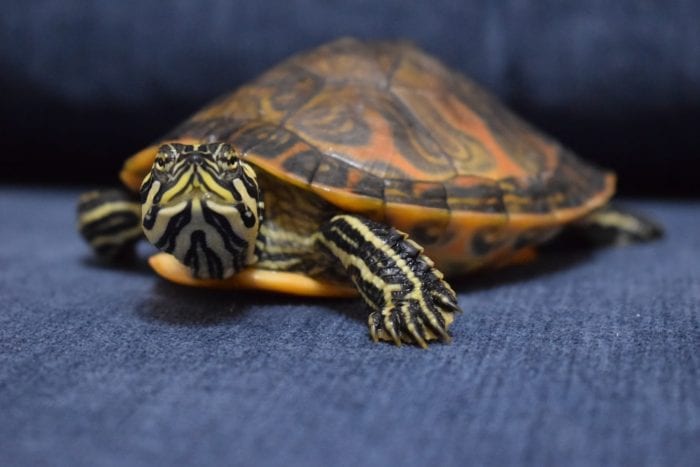Cold Spring Harbor Fish Hatchery presents a virtual program for children, The Hard Facts About Turtles, on Dec. 28 via Zoom from 10 to 11 a.m. Can turtles come out of their shells? Learn the hard facts about turtle shells with a storytime, craft, and by meeting some of the hatchery’s terrific turtles. Craft materials needed: paper plate (or a circle cut from paper), printed turtle template (or make your own, scissors, glue, crayons or markers, scraps of colored paper (optional) $15 registration fee. To sign up, visit www.cshfishhatchery.org. Call 516-692-6768 for more information.
Turtles
SBU’s Patricia Wright urges preservation of Madagascar’s biodiversity
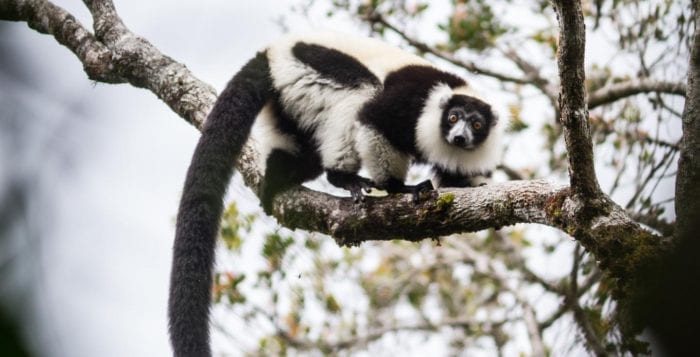
By Daniel Dunaief
As a part of an ambitious reforestation plan announced in March, Madagascar’s newly elected president Andry Rajoelina explained that he wanted to change the way his nation off the southwest coast of the African continent was known, from the Red Island to the Green Island.
An international collection of scientists, including lemur expert and award-winning scientist Patricia Wright of Stony Brook University, recently weighed in on other ways Rajoelina can help conservation goals for the country through a five-step solution they outlined in the journal Nature Sustainability.
“We are all very concerned” about the fate of biodiversity in Madagascar, said Wright. “We know that only with a collaborative effort can we push things in the right direction.”
Madagascar, which has numerous species endemic to the island nation, including many of the lemurs Wright studies, is known as the island of red clay in part because deforestation has exposed much of the clay underlying the country. This clay has eroded into rivers, which have washed into the ocean.
“If you flew over the whole island, it would be very sad” because of all the exposed red clay from deforestation, Wright said.
She remains optimistic about Rajoelina’s goals and the potential for achieving them. The president “talked about going on the offensive and reforestation is one of his platforms,” she said. “It’s most important to reforest with endemic species,” as opposed to eucalyptus and pine.
Unlike in other countries, where politicians sometimes view conservation and economic development as forces pulling in opposite directions, Malagasy leaders acknowledge and recognize the benefit of preserving unique habitats that are home to the rare and threatened species of Madagascar.
“If you destroy all the forests, you destroy all the water and they will no longer be able to farm,” Wright said. “The natural wildlife and habitats are closely connected to their well-being. One of the biggest industries is ecotourism, which supports many industries on the ground. It’s not like there’s a line between people and wildlife.”
Indeed, the scientists acknowledge the importance of financial growth for the country that dovetails with their conservation goals.
“Conservation needs to contribute to, and not detract from, national efforts targeting economic development,” Julia Jones of Bangor University, in Wales, who led the study, said in a press release. “It must not make situations worse for the rural poor who are so often marginalized in decision making.”
The people of Madagascar have many of the same needs as those in other countries, as they seek jobs, health care, and good schooling, Wright said. “These families are closer to not having enough food to eat and they are much poorer if the natural resources are all destroyed.”
Concerned about the fate of biodiversity in Madagascar, Jones contacted Wright, who suggested the team enlist the help of Jonah Ratsimbazafy from the University of Antananarivo in Madagascar.
“It was just a matter of bringing together some of the key players in conservation for 20 years,” explained Wright.
The group generated a list of five priorities.
First on the list is tackling environmental crime. The scientists suggest using new technologies, including remote sensing and rapid DNA barcoding, to allow forest rangers and others to identify protected species. To improve this effort, however, the Ministry of Justice also needs to enhance the way it reacts to environmental crimes.
The researchers suggest prosecuting and fining those who traffic in rosewood or the critically endangered species for the pet trade. They see progress in this arena in the northeastern part of the island nation, where prosecutors have effectively charged some people who have sold rosewood.
Second, the group recommends investing in protected areas. The researchers urge greater investment in policy, legal and economic conditions that encourage additional investment in nature, which could include improving infrastructure to develop tourism around protected areas, payment for ecosystem services and debt for nature swaps.
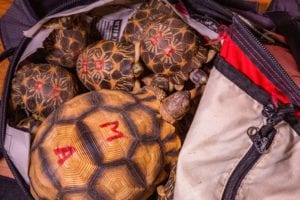
Third, the scientists urge that major infrastructure developments limit the impact on biodiversity. The current environmental impact assessment law is over 20 years old and needs an update to require the use of environmental assessment. This component also includes a greater commitment to enforcement.
Fourth, the scientists suggest strengthening tenure rights for local people over natural resources. Most farmers can’t get certification for their land, which reduces the incentive for them to invest in settled agriculture and potentially exacerbates forest clearance. A review of tenure laws could help local landowners and biodiversity.
Finally, researchers recognize a growing crisis in fuel wood. They urge an investment in reforestation efforts, which could provide environmental and economic benefits.
While these steps are important for Rajoelina and the government in Madagascar, Wright suggests several ways Long Islanders can help. She urges school teachers to cover Madagascar in their classes. Teachers in the area who are interested in gathering information about the island nation can write to Wright at [email protected].
She also urges people to become involved through social media, which they can use to have fundraisers through organizations like PIVOT, an organization committed to improving health in developing nations like Madagascar and strongly encourages people to visit Madagascar, where they can enjoy the benefits of ecotourism.
Visitors to Madagascar would have the incredible opportunity to witness the varied biodiversity for themselves.“We have charismatic lemurs,” Wright said, although many of them are critically endangered. Even if they can’t travel that far, people can support students who wish to study abroad.
“I don’t think health and wildlife are separated,” Wright said. “The health of the people depends on us preserving natural resources.”
She is looking forward to the Annual Association for Tropical Biology and Conservation meeting in Antananarivo, Madagascar, from July 30 through August 3. “Hopefully, we will be going forward with the next step during or shortly after that meeting.”
Environmentalists hope new crab trap regulations will save turtles
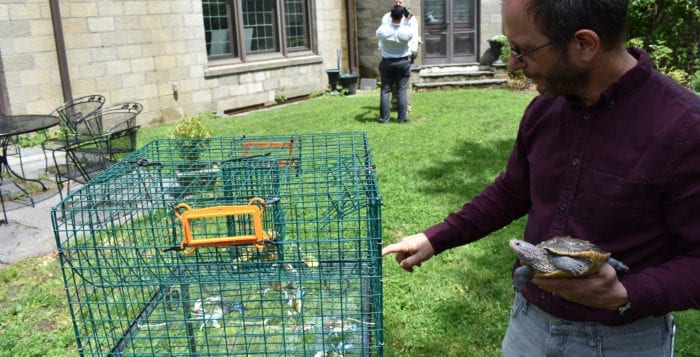
It has been a slow crawl saving Long Island’s turtles, but local conservation groups are hoping new state regulations will speed up the process.
The New York State Department of Environmental Conservation and Long Island environmental groups gathered May 23 at the Suffolk County Environmental Center in Islip to celebrate new rules requiring crab cages — used in Long Island’s coastal waters including many of the bays, harbors and rivers that enter Long Island Sound — to have “terrapin excluder devices” (TEDs) on all entrances. As carnivores, terrapins are attracted to bait fish used in commercial, or what’s known as Maryland style crab traps or “pots.” As a result, male and female turtles of all sizes push their way through the entrance funnels and end up drowning.
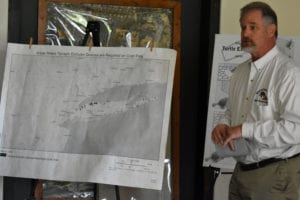
“With each and every season these traps are not required to have TEDs, there are likely hundreds of terrapins that are drowning,” said John Turner, conservation policy advocate for Seatuck Environmental Association, which operates the Islip center. “To me, one of the signs of a real civilized society is how we treat other life-forms. We haven’t treated terrapins very well.”
He said in Stony Brook Harbor alone there are dozens, maybe hundreds of terrapins that will spend the winter in the mud, emerging once the water runs up high enough. Turner said many of the North Shore areas that are home to these turtles, like Setauket Harbor, Conscience Bay, Port Jefferson Harbor, Mount Sinai Harbor and Nissequogue River, play a key role in preserving the species.
“In contrast to where I am in South Jersey, I can go by the canals and I can see a dozen [terrapin] heads bobbing up and down,” said James Gilmore, director of the marine resources division at the state DEC. “Here, it’s very rare to see one. Hopefully these new rules will help us see more.”
Gilmore said the DEC began working on changing state regulations in 2013 but have known long before there was a problem.
Carl LoBue, The Nature Conservancy’s New York ocean program director, said it was in the late 1990s he’d witnessed recreational crab traps in Stony Brook Harbor. One day he lifted a cage out of the water while trying to move his landlord’s boat and saw it was filled with trapped terrapins. Two were still alive, but five
had already drowned.
“With each and every season these traps are not required to have TEDs, there are likely hundreds of terrapins that are drowning.”
— John Turner
“I’m sure the crabber wasn’t intent to kill turtles,” LoBue said. “But when I looked across the bay at the 60 or something crab traps this person had set, I was crushed thinking of the terrapins drowning at that very moment.”
In the early 2000s terrapins became a popular meal in New York, but the harvest of those turtles led to a massive decrease in population, especially the diamondback terrapin, which was identified as a species of greatest conservation need in the 2015 New York State Wildlife Action Plan. In September 2017 the DEC passed regulations banning the commercial harvest of diamondbacks.
Terrapin population has slowly increased since then, but researchers say there’s still little known about the population, like life expectancy or habits while in water. The species has a very slow birth rate, with low local clutches of 10 or so eggs — sometimes only one or two of which hatch and mature.
Russell Burke, a professor of biology at Hofstra University, said terrapins could live very long lives, pointing to older specimens he has seen living to 60 years old, but he estimated some could be twice that age. While Burke said it’s hard to estimate the total population on Long Island, he said in Jamaica Bay alone, he knows there are approximately 3,500 adult females.

The TED devices are 4 3/4 inches by 1 3/4 inches, an exact measurement, to ensure that while crabs can get through, turtles cannot. According to Kim McKown, leader of the Marine Invertebrate and Protected Resources Unit at the state DEC, the small, plastic TEDs cost $10 for the three needed to secure a normal crab trap. The cost exponentially increases depending on how many traps a fisherman has, with some owning up to 1,000 traps.
Turner said his organization used its own funds and purchased 5,000 TEDs and gifted them to the DEC. The state agency is giving them to Long Island crab fishermen on a first come, first served basis.
Commercial crab fisherman Fred Chiofolo, who hunts in Brookhaven Town along the South Shore, experimented with TEDs on his own for years before the regulations were passed. He said the devices
even improved the number of crabs caught.
“It made a significant difference with the pots that had them versus the pots that didn’t,” Chiofolo said. “Last year I put them in every pot I had — about 200 of them. I’m not going to lie it’s a lot of work to put them in, but we don’t want to catch the turtle. I don’t want them, and [the TED] does keep them out.”
Reptile files: Illegal animals turned over at Brookhaven ecology center
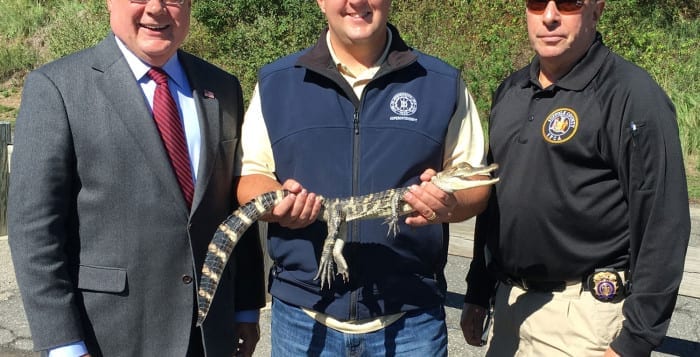
Long Islanders turned in three American alligators and eight turtles at a recent animal amnesty event in Brookhaven Town, and all of the reptiles are shipping up to a Massachusetts sanctuary.
Brookhaven’s Holtsville Ecology Center hosted the event on Oct. 10 to allow residents to turn in any protected, endangered or threatened animals that require special New York State Department of Environmental Conservation and U.S. Fish and Wildlife Service permits without fear of penalties or questioning. It was the second annual event of its kind for the town, which operated with the help of those two agencies and the Suffolk County Society for the Prevention of Cruelty to Animals.
People with dangerous or illegal animals were able to turn them over to professionals, no questions asked.
Suffolk SPCA Chief Roy Gross called the recent amnesty event a success, saying the three alligators turned in “had the potential of ending up endangering the public.”
According to Brookhaven Town, the average length a fully grown female American alligator is a little more than 8 feet, and a fully grown male can be longer than 11 feet. Of the three alligators turned in, two were males, measuring 27 and 29 inches, and one was a 32-inch female.
“People should think twice before acquiring illegal reptiles or mammals,” Gross said in a statement from the town. “They do not make good pets and you are risking fines and possible jail time.”
At last year’s animal amnesty event, people turned in 25 animals, including a western diamondback rattlesnake, a green anaconda, four boa constrictors, an American alligator and two marmosets.
“These animals were turned in before the people harboring them as pets released them into the wild, creating a potentially dangerous situation in our local communities,” Highway Superintendent Dan Losquadro said in a statement about the alligators and turtles turned over this year. “These animals will now receive proper care without posing a threat.”
Owners of potentially dangerous animals have dumped them in public places in the past, creating a public safety issue. In late August, a 25-pound alligator snapping turtle was discovered in a stream of the Nissequogue River opposite the Smithtown Bull on Route 25. The reptile is not indigenous to Long Island — it is a freshwater animal with enough power to bite off a human toe or finger, and is usually found in places from eastern Texas to the Florida panhandle.
“People need to understand that many exotic animals can be very dangerous if not handled properly or allowed to grow to their adult size,” Supervisor Ed Romaine (R) said in a statement. “They are even more threatening if released into the wild, where they could harm people or other animals.”


